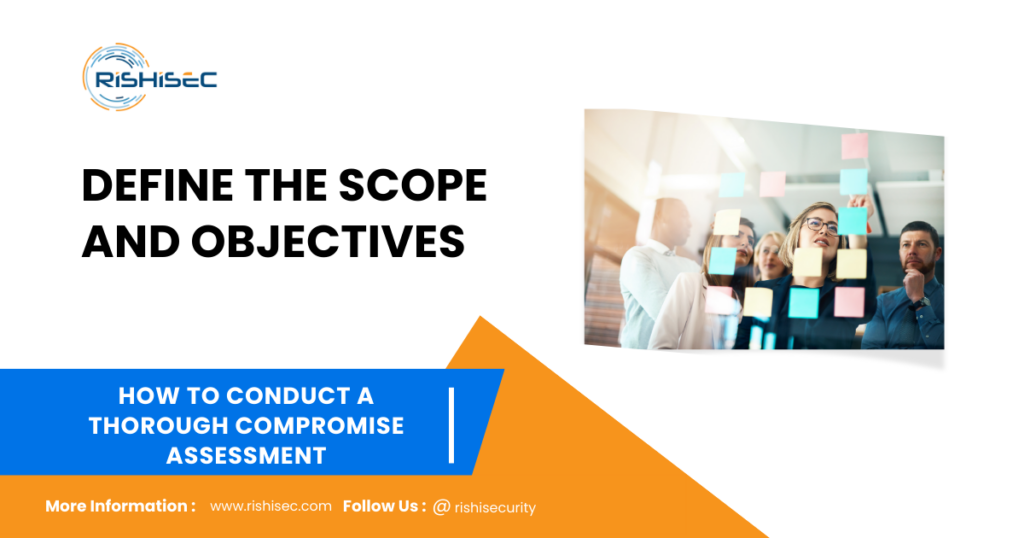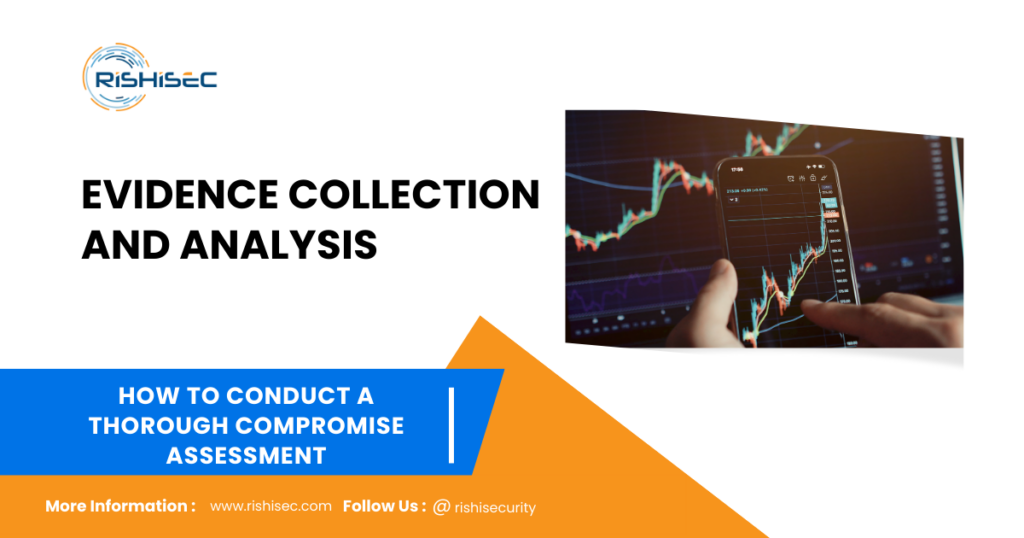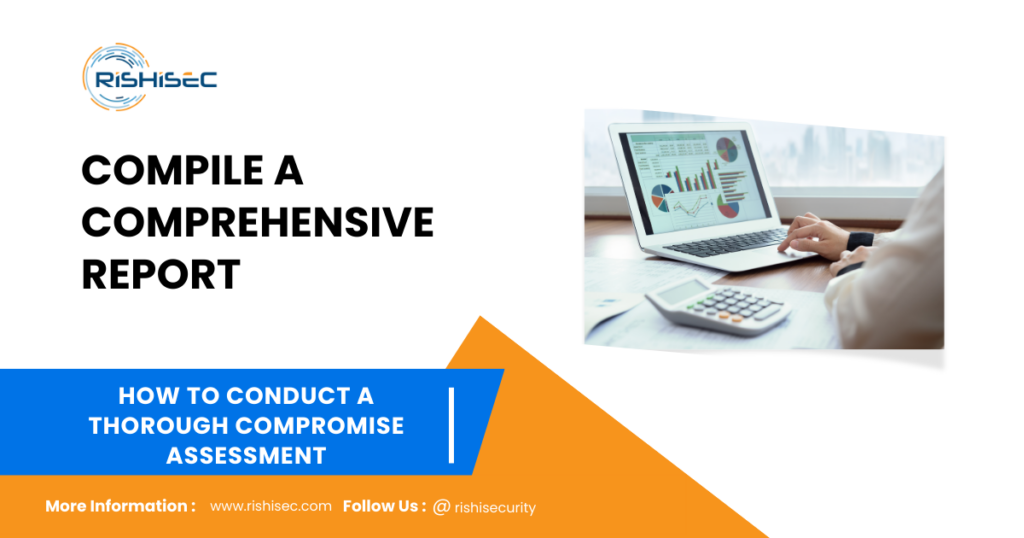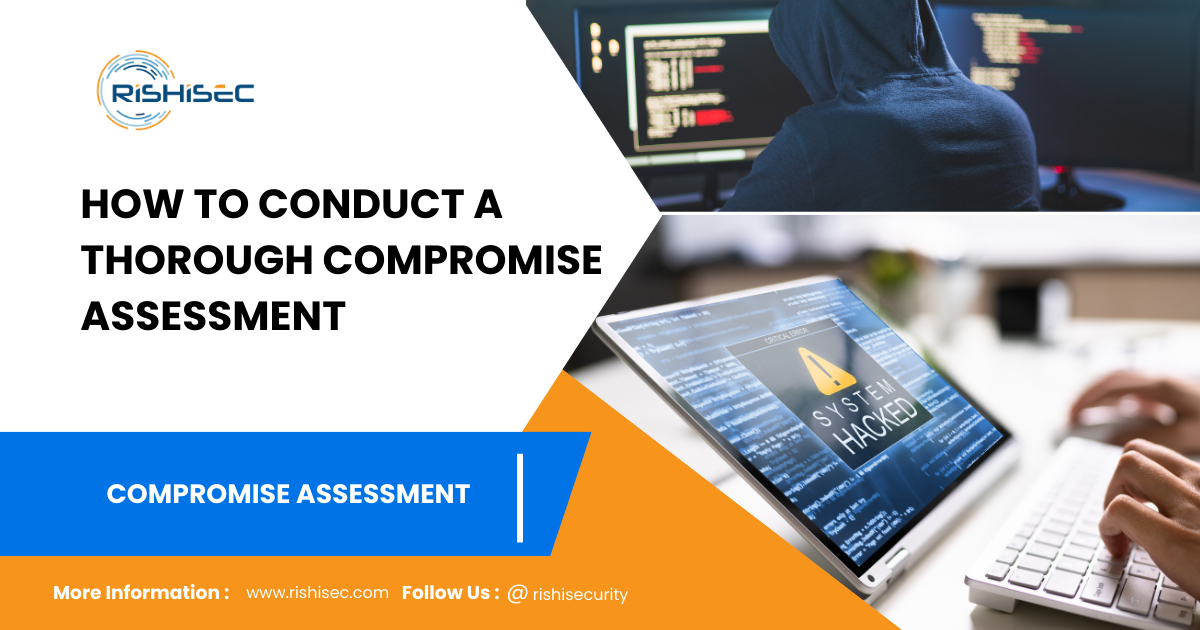In the ever-evolving landscape of cybersecurity, compromise assessments are an indispensable component of any robust security strategy. These assessments help organizations not only detect ongoing breaches but also identify potential vulnerabilities that could be exploited in the future. However, knowing how to conduct a thorough compromise assessment is key to unlocking the full potential of these evaluations. A well-conducted compromise assessment provides invaluable insights into your organization’s security posture, enabling proactive defenses against increasingly sophisticated attacks. When performed systematically, these assessments serve as both a diagnostic tool and a preventive measure, empowering businesses to stay one step ahead of emerging threats.
Contents
Step 1: Define the Scope and Objectives

A successful compromise assessment begins with a clear scope. Are you assessing the security of your entire organization, or are you focusing on specific systems, networks, or regions? Without a well-defined scope, your assessment can quickly become unwieldy, leading to wasted time and resources. Be strategic about what you’re evaluating.
For instance, if you’re in a highly regulated industry such as finance or healthcare, compliance requirements may dictate that certain systems receive priority. Clarify your objectives—are you primarily concerned with detecting current breaches, or are you also looking for vulnerabilities that attackers could exploit down the line? Establishing these criteria upfront will streamline the process and make your assessment more focused and effective.
Pro Tip: Smaller businesses can focus on their critical assets or most sensitive systems. Larger organizations, however, might consider breaking the assessment into phases to cover different departments or regions over time.
Step 2: Evidence Collection and Analysis

After defining your scope, the next step is to gather and analyze evidence. This is the heart of the compromise assessment, where forensic tools and techniques come into play. Logs, network traffic, file systems, and event data must all be scrutinized for anomalies that could indicate a breach. Use advanced security tools such as CrowdStrike, Carbon Black, or Splunk to automate much of the data collection and help sift through enormous amounts of information.
However, don’t fall into the trap of relying solely on automation. Manual investigation is critical for detecting more sophisticated threats. In the 2020 SolarWinds hack, automated tools missed the breach for months. It was only through painstaking manual analysis that the full extent of the attack was uncovered. This underscores the importance of blending automated and manual techniques to ensure nothing slips through the cracks.
Example: While tools like Splunk can help you aggregate logs from multiple sources, manually reviewing unusual activity in those logs may reveal hidden signs of malicious behavior, such as unusual login patterns or unexpected data exfiltration.
Step 3: Analyze Attacker Behavior
Understanding the behavior of attackers is crucial to a successful compromise assessment. Begin by analyzing Indicators of Compromise (IoCs)—these include unusual IP addresses, domains, or file hashes that may suggest malicious activity. But go beyond these surface-level indicators. Advanced persistent threats (APTs), for instance, often use stealthy, fileless malware that can evade detection by standard security tools.
Take the time to research known tactics, techniques, and procedures (TTPs) associated with specific threat actors. These insights will help you not only confirm the presence of an attacker but also anticipate their next moves. The key is to not just detect the compromise but to deeply understand the attacker’s motives, methods, and level of sophistication.
Real-World Insight: Attackers often dwell inside compromised networks for months before being detected. In many high-profile breaches, including the Equifax breach, the attackers had gained a foothold in the system long before any indicators were found. Studying their behavior allows you to pinpoint the scope of the breach and determine how long the attackers have been inside your network.
Step 4: Prioritize Response Actions
Once a compromise is detected, your organization must act swiftly but deliberately. Prioritization is key. First, isolate compromised systems to prevent further spread of the attack. Next, identify the root cause of the breach and take steps to neutralize it.
It’s important to balance speed with strategy. If you shut down a system too quickly, you might tip off the attacker, causing them to escalate or destroy valuable evidence. Conversely, waiting too long to respond could allow the attacker to further infiltrate your network. The goal is to contain the breach while gathering as much intelligence as possible for future prevention.
For example, if the compromise involves sensitive data, such as financial records or customer information, prioritize securing these assets first. At the same time, use threat intelligence platforms like ThreatConnect or Recorded Future to gain insights into the attacker’s tactics and assess the likelihood of future attacks.
Step 5: Compile a Comprehensive Report

The final step in a compromise assessment is creating a detailed report of your findings. This document should outline:
- The scope of the assessment: What systems or networks were evaluated?
- Key findings: Which vulnerabilities or breaches were discovered?
- Remediation steps: What actions were taken to neutralize threats?
- Recommendations: How can the organization improve its defenses going forward?
This report is not just a formality—it serves as a roadmap for future security improvements. Share this document with stakeholders across your organization, including the C-suite and board members, to ensure they understand the severity of the breach and the steps needed to prevent future incidents.
In addition to internal reporting, you may also need to communicate your findings to external regulators or customers, especially if sensitive information was compromised. In highly regulated industries, a breach can trigger mandatory reporting requirements, making transparency and thorough documentation essential.
Expert Tip: The report should not only detail the technical aspects of the breach but also include strategic recommendations for enhancing the organization’s cybersecurity posture. This could involve implementing more advanced monitoring tools, conducting regular vulnerability scans, or adopting a Zero Trust architecture.
Conclusion: The Need for Continuous Vigilance
A compromise assessment is not a one-time effort. Cyber threats evolve rapidly, and attackers are constantly finding new ways to bypass defenses. That’s why continuous monitoring and regular compromise assessments are essential to maintaining a strong security posture.
Organizations should aim to conduct regular assessments as part of their broader cybersecurity strategy. The insights gained from each assessment will help you not only react to immediate threats but also build long-term resilience. After all, in cybersecurity, it’s not a matter of if you’ll be attacked—it’s a matter of when.
CTA
Protecting your organization from cyber threats requires more than just a one-off assessment. With SentryCA, you gain access to a comprehensive compromise assessment solution tailored to your specific needs. Our advanced tools and expert analysts ensure that no threat goes undetected.
Get started today with a free trial and see how SentryCA can bolster your security strategy, keeping your organization safe from even the most sophisticated attacks.
While Using Behavioral Analysis in Compromise Assessments: An Advanced Guide, you will become a Cyber Security champion.


